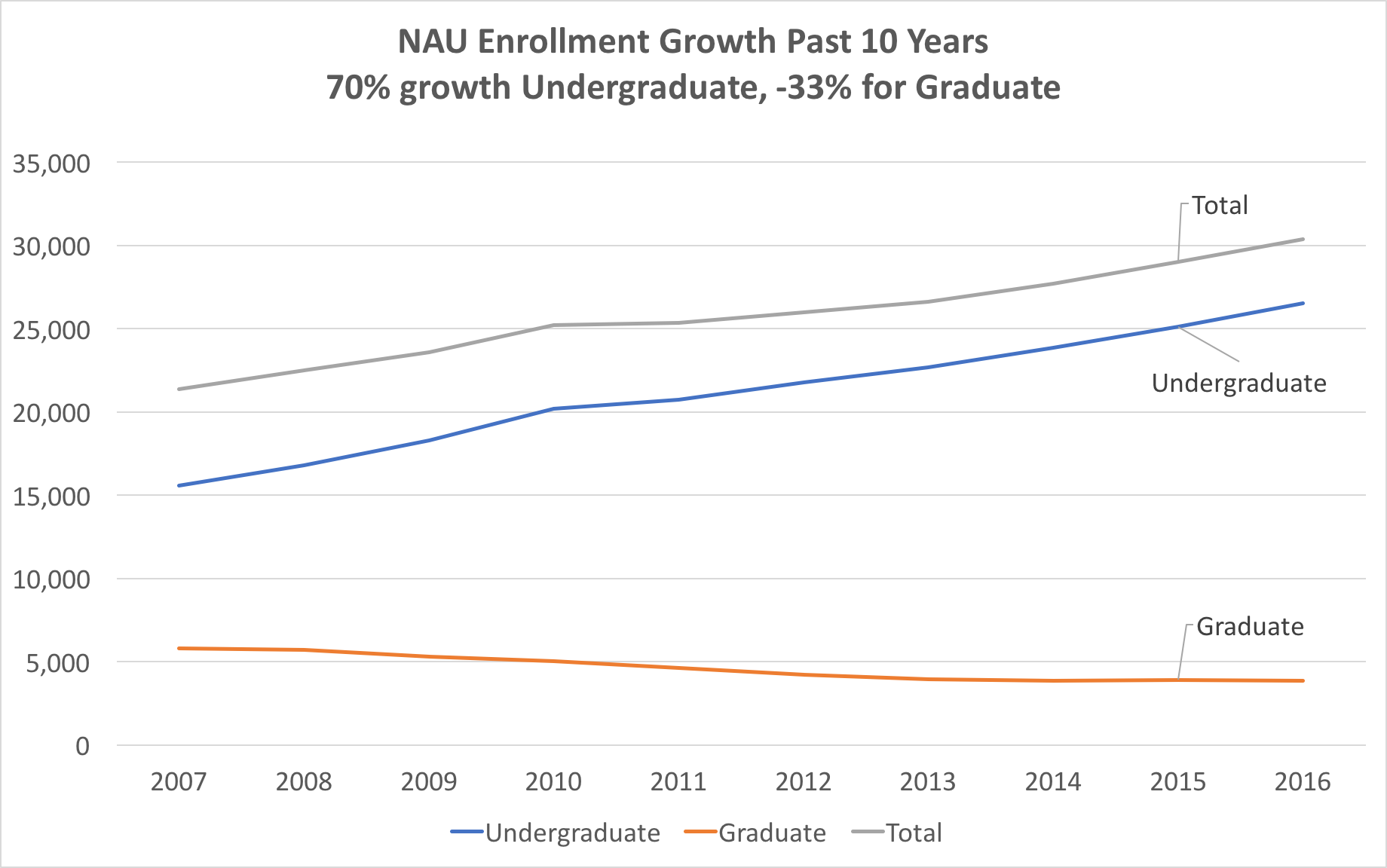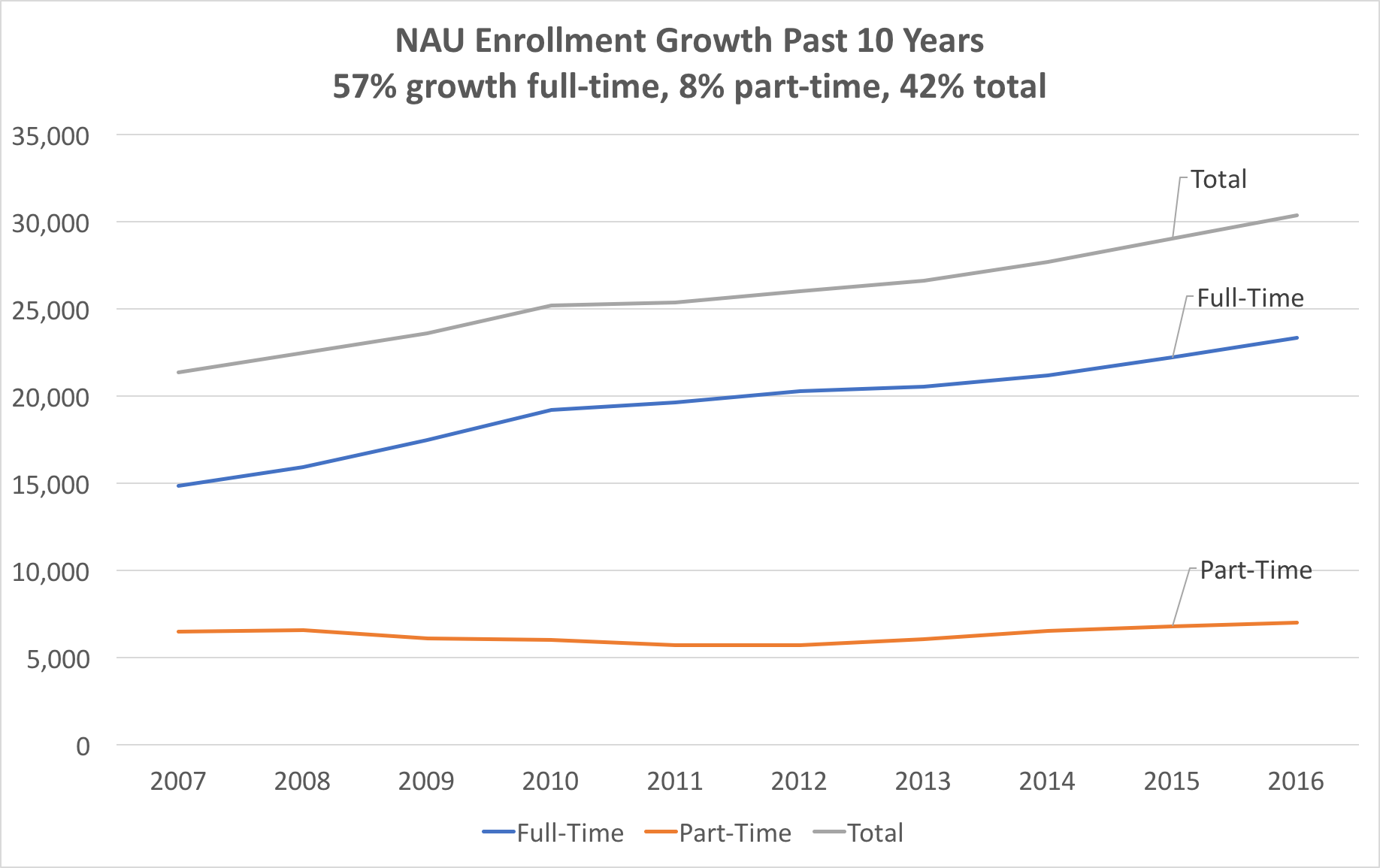As part of our e-Literate TV series of case studies, we had a chance this fall to interview faculty and staff at Northern Arizona University about, well, a lot of stuff.1 Rather than highlighting a specific program or course redesign, NAU has invested in and implemented a suite of initiatives focused on improving student learning and success by rethinking the experience of (mostly) first-year students.
The core challenge NAU faces is to make these student-facing changes while facing growing enrollment, particularly for full-time undergraduate students.
To make matters more interesting, more than 40% of first-year students are first-generation – a demographic group that can be fully capable of getting a degree but with an uphill climb in the first year. These challenges lead to a somewhat unique situation for a large research university. In this first episode, we highlight the suite of initiatives and how they fit together.
(Video source: https://youtu.be/UirXLm7kd1o)
In upcoming videos we’ll take a deeper look at two programs. In episode 2 we’ll look at NAU’s student support outside of the classroom, driven partially by the Integrated Planning and Advising for Student Success (IPASS) initiative. In episode 3 we’ll look at NAU’s use of a modified emporium for first-year math courses.
- Disclosure: Our e-Literate TV series of video case studies and explainer videos is funded by a grant from the Bill & Melinda Gates Foundation. [↩]


[…] In episode 1 of our e-Literate TV case study on Northern Arizona University, we gave a broad overview of the suite of initiatives (primarily) targeted at helping first-year students amidst the tensions coming from growing enrollments.[1] In episode 2 we covered their advising and student support, including work with IPASS initiative. In this episode we look at their modified math emporium approach leveraging the Lumberjack Mathematics Center. […]